Pehr Henrik Ling
Pehr Henrik Ling (15 November 1776 in Södra Ljunga – 3 May 1839 in Stockholm)[1] pioneered the teaching of physical education in Sweden. Ling is credited as the father of Swedish massage.
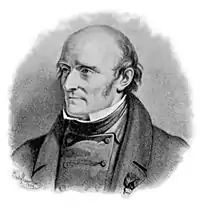
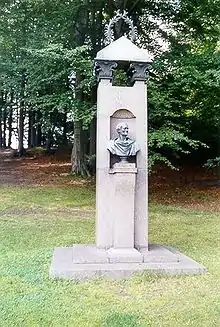
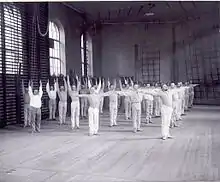
Early life
Ling was born in Södra Ljunga, Småland in 1776. His parents were Lars Peter Ling, a minister, and Hedvig Maria (Hedda) Molin. On his maternal side, Ling was the great-great grandson of the famous Swedish scientist Olof Rudbeck (1630–1702), who discovered the human lymphatic system. His family tree extends back to the sixteenth century and includes clergymen and peasants. His great grandfather apparently lived to 105 and had seventeen sons and two daughters.[2] After graduating from the Växjö gymnasium in 1792, he studied theology at Lund University from 1793, completing his degree at Uppsala University in 1799.[1] He then worked as a tutor for several families for the next three years.[3]
Travels
In 1800, Ling left Sweden and lived abroad and traveled for seven years. He studied modern languages at the University of Copenhagen. He then traveled to Germany, France, and England. He took part in a naval battle as a volunteer on a Danish ship.[3] Ling studied Goethe and Schiller, the Edda and northern mythology, and composed original poems in Swedish, German, French and Danish. He learned fencing at a school of French emigres and noticed its benefits, and those of physical education, on the gout in his arm.[2] Financial difficulties and rheumatism caused him to return to Sweden.
Teaching
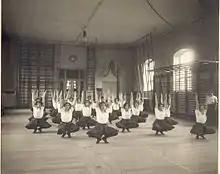
He read Johann Christoph Friedrich GutsMuths' book Gymnastics for the Youth, and participated in the gymnastic exercises of the originator of Danish gymnastics, Franz Nachtegall He returned to Sweden 1804 in order to establish a gymnastic institute.[2]
It is possible that Ling's gymnastics were inspired by Chinese body exercises. Also it is possible that there was a lot of influence from Ling's method in the development of Chinese body exercises, that is from the West to China.[4]
Back in Sweden, Ling began a routine of daily exercise, including fencing, and in 1805 was appointed as a master of fencing at Lund University. Having discovered that his daily exercises had restored his health, Ling decided to apply this experience for the benefit of others. He saw the potential of adapting these techniques to promote better health in many situations and thus attended classes in anatomy and physiology, and went through the entire curriculum for the training of a medical doctor. He then outlined a system of gymnastics, exercises, and maneuvers divided into four branches: pedagogical, medical, military, and aesthetic which carried out his theories and demonstrated the scientific rigor to be integrated or approved by established medical practitioners. Ling was the gymnastics instructor in the Military Academy at Carlsberg.[2]
After several attempts to interest the Swedish government, Ling at last obtained government cooperation in 1813,[5] and founded the Royal Central Gymnastics Institute for the training of gymnastic instructors was opened in Stockholm,[6] with Ling appointed as principal. Ling invented physical education apparatus including the box horse, wall bars, and beams.[6] He is also credited with developing calisthenics and free calisthenics.[6] Orthodox medical practitioners were opposed to the claims made by Ling and his disciples. However, by 1831, Ling was elected a member of the Swedish General Medical Association (Svenska läkaresällskapet), which demonstrated that his methods were regarded as worthy of professional recognition. He was elected a member of the Swedish Academy in 1835[7] and became a titular professor the same year.
Legacy
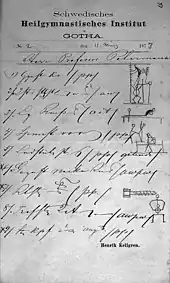
When Ling died of tuberculosis[7] in 1839, he had charged three of his pupils with carrying on his legacy. These pupils were Lars Gabriel Branting (1799–1881), who succeeded Ling as principal of the Institute; August Georgii, who became sub-director of the Institute; and his own son, Hjalmar Ling (1820–1886). These three, along with Major Thure Brandt, who from c. 1861 specialized in the treatment of women (gynecological gymnastics), are regarded as the pioneers of Swedish medical gymnastics.
Although Ling is sometimes credited as the father of Swedish massage, it was not a part of his Gymnastic Movements nor the curriculum of the Royal Central Gymnastic Institute founded by Ling in 1813.[8] The Swedish massage techniques effleurage (long, gliding strokes), petrissage (lifting and kneading the muscles), friction (firm, deep, circular rubbing movements), tapotement (brisk tapping or percussive movements), and vibration (rapidly shaking or vibrating specific muscles) are largely credited to Johann Georg Mezger (1838–1909).[8]
Some sources mention that Ling learned massage from a Chinese friend, Ming, but this was an invention of Ling’s rivals, in an effort to discredit his work. Although Ling was probably aware of Chinese massage, he instead developed a system of integrated manual therapy, combining physical training and gymnastic procedures with knowledge of anatomy, physiology, and pathology.[9] He was the first to publish and popularize such a system with modern scientific knowledge.
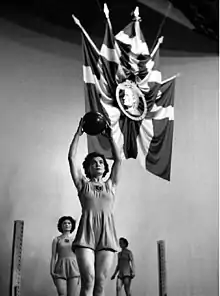
Ling's system of medical gymnastics also influenced later institutions and systems. The Gymnastic Orthopedic Institute was founded in Stockholm in 1822 by Nils Åkerman, which from 1827 received a government grant. Around 1857, Gustav Zander developed a medico-mechanical system of gymnastics, known by his name, founding the Zander Institute at Stockholm in 1865. At the Stockholm Gymnastic Central Institute, qualified medical faculties have supervised the medical department since 1864. The Dedham Public Schools began teaching the Ling System in 1893.[10]
Broadly speaking, there have been two streams of development in the Swedish gymnastics founded on Ling's beginnings, either in a conservative direction, making certain forms of gymnastic exercises subsidiary to the prescriptions of orthodox medical science, or else in an extremely progressive direction, making these exercises a substitute for any other treatment, and claiming them as cures for diseases. A representative of the latter, more extreme section was Henrik Kellgren (1837–1916), who had a special school and following.
Other accounts of Dr Ling's practice and philosophies were published: a Handbook of Medical Gymnastics (English edition, 1899) by Anders Wide of Stockholm represents the more conservative practice. Henrik Kellgren's system is partially based on Ling's, and is described in The Elements of Kellgren's Manual Treatment (1903) by Edgar F. Cyriax, who, before earning his MD at Edinburgh, had served at the Stockholm Institute as a gymnastic director. See also the encyclopedic work Sweden: its people and its industry: historical and statistical handbook (1904), p. 348, edited by Gustav Sandburg for the Swedish government.
The yoga scholar Mark Singleton states that Ling's gymnastics shaped the development of modern yoga as exercise in the Western world.[11]
In 1939 and again in 1949, Sweden held a large gymnastics competition named for Ling, "The Lingiad" (written Lingiaden in Swedish).[12]
Honors and awards
Honorary Fellow in Memoriam, National Academy of Kinesiology[13]
References
- Georgii, Augustus (1854). A Biographical Sketch of the Swedish Poet and Gymnasiarch, Peter Henry Ling. Oxford University: H. Bailliere, London. pp. 1–2, 39.
- Diem, Carl. "Pehr Henrik Ling On the Occasion of the One Hundredth Anniversary of His Death" (PDF). library.la.84. Archived from the original (PDF) on 12 September 2016. Retrieved 22 November 2015.
- Calvert, Judi (September 2010). "The Life of Pehr Henrik Ling". Massage Today. Retrieved 22 November 2015.
- Singleton, Mark (2015). "Preface to the Serbian edition of Yoga Body: The Origins of Modern Posture Practice Mark SingletonTranslated by Nikola Pešić (Belgrade: Neopress Publishing, 2015)". Academia.edu.
- Tidskr, Sven Med (2008). "Pehr Henrik Ling and his impact on gymnastics". Sven Med Tidskr. 12 (1): 61–8. PMID 19848036.
- "Pehr Henrik Ling - Swedish Physical Educator". Encyclopædia Britannica. Retrieved 22 November 2015.
- Brodin, H. (2008). "Pehr Henrik Ling and his impact on gymnastics". Sven Med Tidskr. 12 (1): 61–8. PMID 19848036.
- Calvert, Robert Noah. "Swedish Massage". Massage Magazine. Retrieved 15 June 2013.
- Ottosson, A (2010). "The first historical movements of kinesiology: scientification in the borderline between physical culture and medicine around 1850". Int J Hist Sport. 27 (11): 1892–1919. doi:10.1080/09523367.2010.491618. PMID 20653114. S2CID 205633105.
- Smith, Frank (1936). A History of Dedham, Massachusetts. Transcript Press, Incorporated. p. 135. Retrieved 21 July 2019.
- Singleton, Mark (2010). Yoga Body : the origins of modern posture practice. Oxford University Press. pp. 84–88. ISBN 978-0-19-539534-1. OCLC 318191988.
- Smithells, Philip A. (2013). "Going to the Lingiad?". Journal of the American Association for Health, Physical Education, and Recreation. 20 (2): 94. doi:10.1080/23267232.1949.10626857. ISSN 2326-7232.
- Cardinal, Bradley J. (2022). "The National Academy of Kinesiology: Its founding, focus, and future". Kinesiology Review. 11 (1): 6–25. doi:10.1123/kr.2021-0064.
- This article incorporates text from a publication now in the public domain: Chisholm, Hugh, ed. (1911). "Ling, Pehr Henrik". Encyclopædia Britannica. Vol. 16 (11th ed.). Cambridge University Press. p. 728.
See also the encyclopedic work: Sandburg, Gustav [ed.] Sweden: its people and its industry: historical and statistical handbook (1904) p. 348.
External links
 Media related to Pehr Henrik Ling at Wikimedia Commons
Media related to Pehr Henrik Ling at Wikimedia Commons